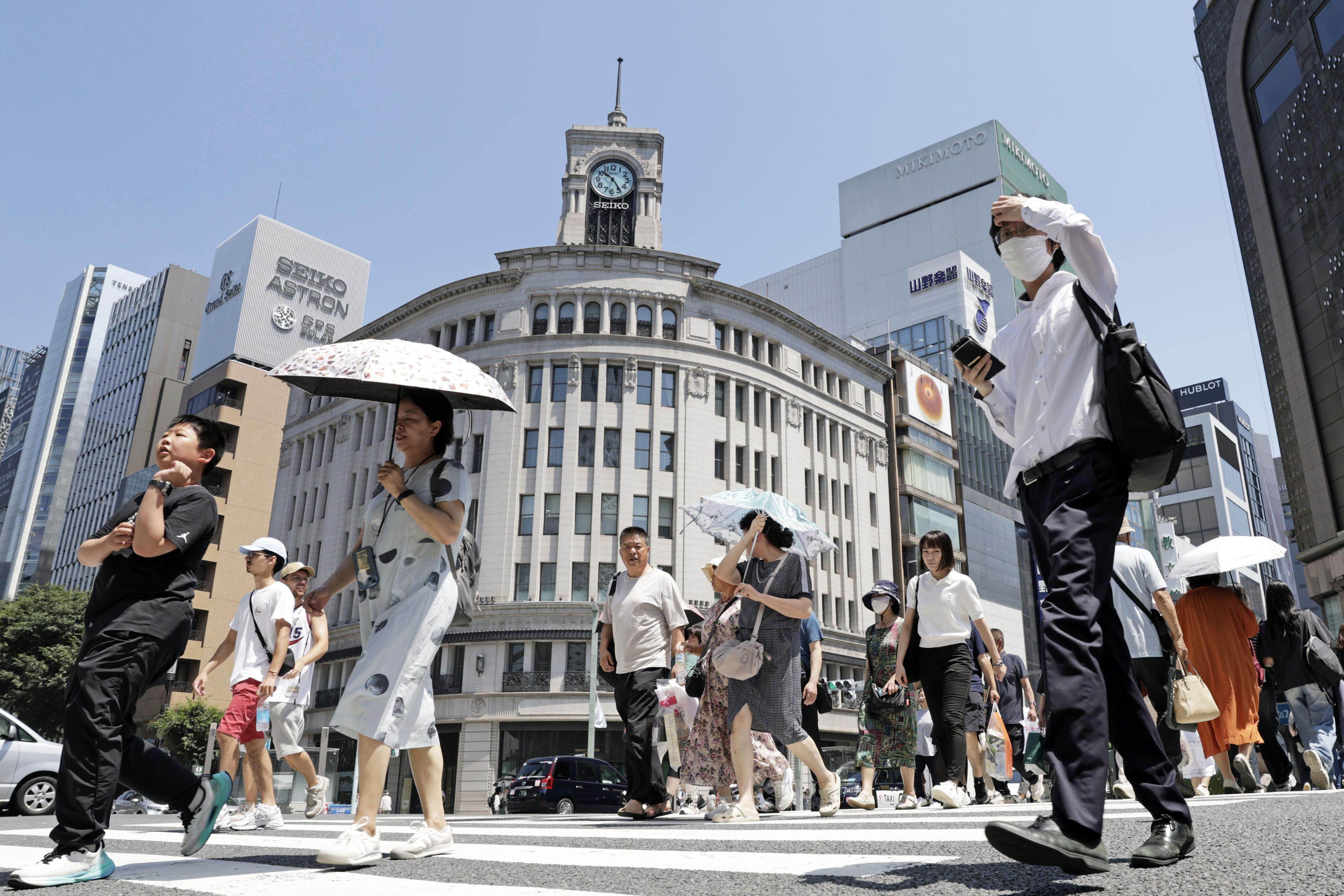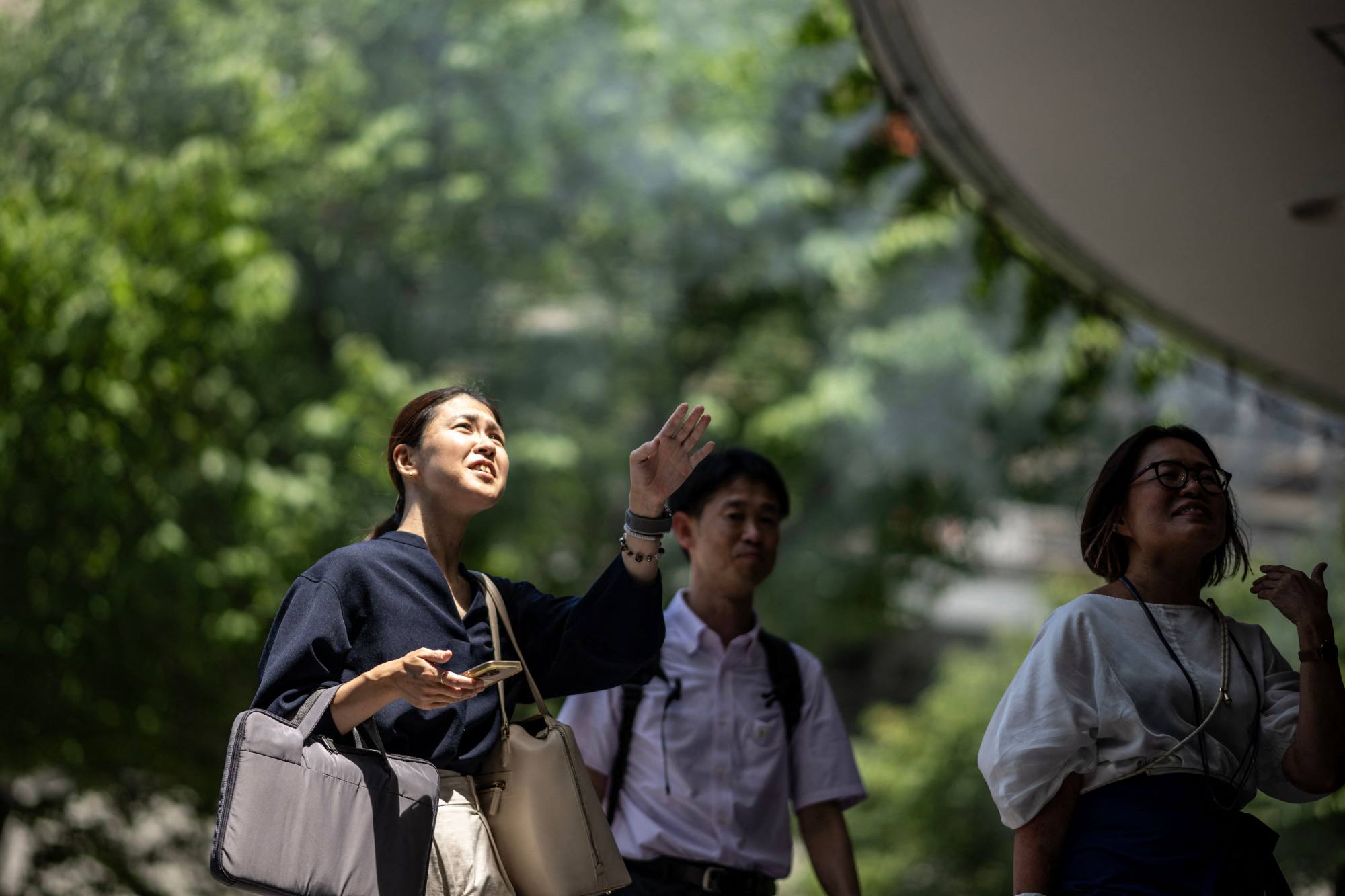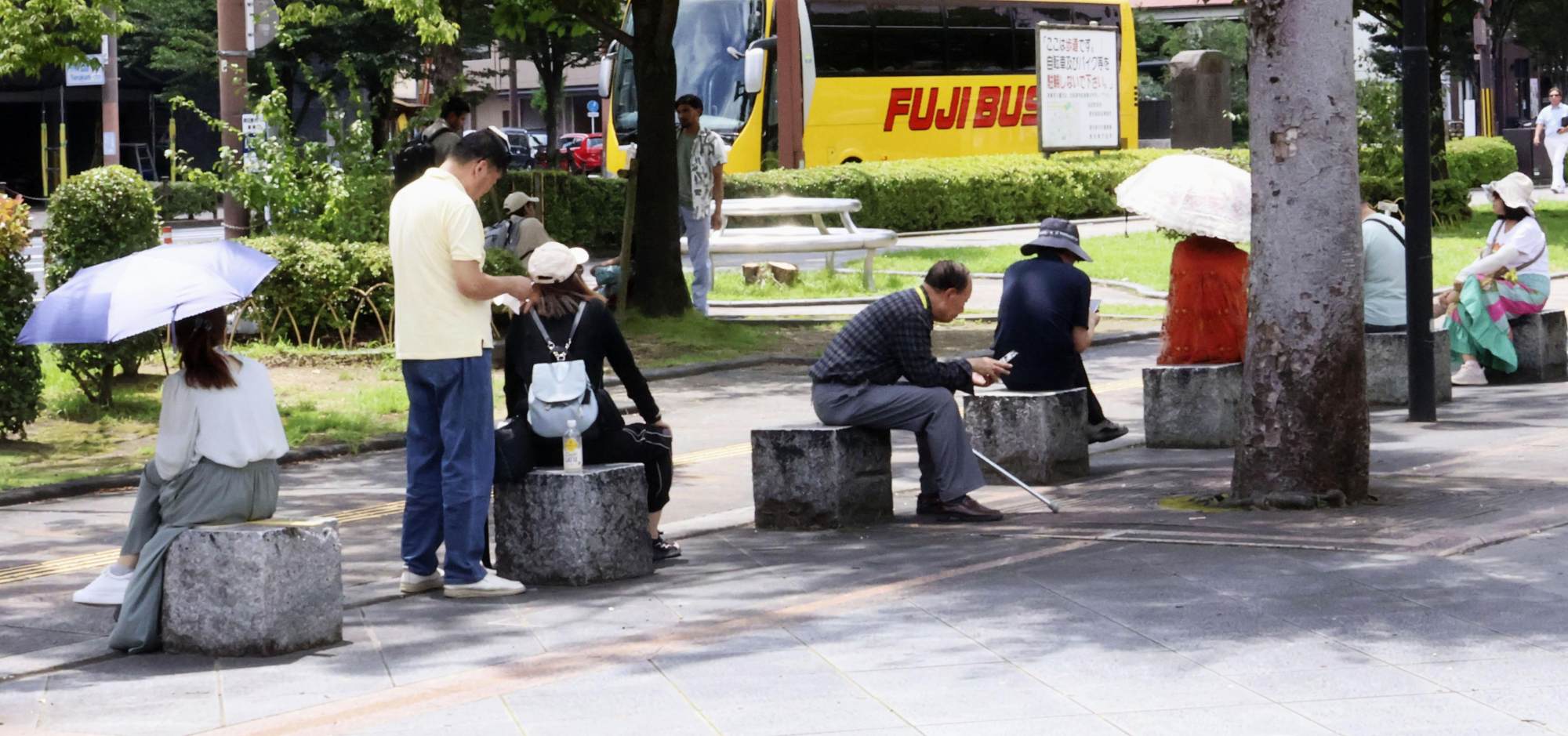Japan on alert against scorching temperatures after 4 die of heatstroke
Meteorological agency issues precautions against early heatwave, as experts warn temperatures this year are likely to be ‘above normal’

At least four people have died of heatstroke and the Japan Meteorological Agency has warned people to take precautions against an early heatwave that has enveloped the nation.
The sudden spike in temperatures began on Tuesday, with Kofu reporting a high of 38.2 degrees Celsius (100.7 degrees Fahrenheit), more than 10 degrees above average for the middle of June, which is typically the rainy season in Japan. Temperatures of 37.7 degrees were reported in Gunma prefecture and 37.6 degrees in Shizuoka.
Tokyo recorded a high of 34.8 degrees and Osaka was at 33.4 degrees, according to the agency, with 547 locations across the country reporting temperatures past 30 degrees.
The four people who died of heatstroke were all elderly and included a woman aged 96 who was found collapsed in a field in Gunma and later pronounced dead. Doctors in Tokyo treated 169 people for symptoms of heatstroke on Tuesday and a further 57 on Wednesday, Agence France-Presse reported.
The above-average temperatures are expected to continue until the weekend.

“The current heat is clearly unusual,” said Yukiko Imada, a professor at the University of Tokyo’s department of Climate System Research.
“For the first time since records began, over 150 locations have experienced extreme heat exceeding 35 degrees by mid-June. It is also unusual that the baiu front, or seasonal rain front, has disappeared, even though we are in the middle of the rainy season,” she told This Week in Asia.
Imada said the primary cause of the extreme heat was linked to the unseasonal expansion of the Pacific high-pressure system over the Japanese archipelago. Typically, the system expands over the country in July or August, she pointed out.
Equally, the JMA’s three-month forecast made for worrying reading, she said, adding: “There is a high probability that temperatures this year will be above normal.”
The agency has issued heatstroke alerts for much of the country over the last three days, with alerts in place on Thursday for Okinawa prefecture, parts of southern Kyushu and central Japan around Kyoto and Nara.

The separate heat stress index for 48 major cities identified none as being “safe”, one as requiring caution and urging people to drink water regularly, while people in a further 15 cities are warned to drink water and take regular breaks if they are outside. In the remaining 32 cities, the agency issued the warning: “heavy exercise prohibited”.
The agency has also issued guidelines on how to avoid heatstroke, with anyone who has to go outdoors instructed to remain hydrated, stay in the shade if possible, avoid strenuous exercise and to remain in contact with elderly neighbours to ensure they are still safe.
The public is also being instructed not to “endure” extreme heat or resist putting on the air conditioning out of concern about rising energy costs.
“It already feels hotter this year than at this time last year,” said Tomoko Nakamura, the owner of a clothing boutique in Yokohama’s Motomachi district.
“I am already using two air conditioning units at home instead of just one, and I’m trying to keep the temperature to about 28 degrees,” 63-year-old Nakamura said, adding that the sudden onset of the summer had led to a spike in sales of sleeveless dresses and other summery clothing.
Last year matched the hottest summer temperatures on record in Japan, with weather officials adopting new terms to communicate the severity of the conditions, including moshobi, meaning a ferociously hot day, for anything above 35 degrees, and kokushobi, or a cruel heat day, for above 40 degrees.
Parts of Gunma prefecture saw temperatures above 40 degrees in July last year, a figure that was almost unheard of before the turn of the century. Since 2000, however, temperatures have broached that level on 59 occasions and the highest temperature recorded in Japan was 41.1 degrees in Saitama prefecture in 2018 and again in Shizuoka in 2020.
Imada says research is continuing into the present heatwave.
“Global warming is contributing to the overall rise in baseline temperature levels, although the current heatwave is still under analysis,” she said.
“In addition, the unprecedented heat over the past two years is believed to have been influenced by marine heatwaves around Japan. Research is currently under way to better understand the mechanisms behind these marine heatwaves.”